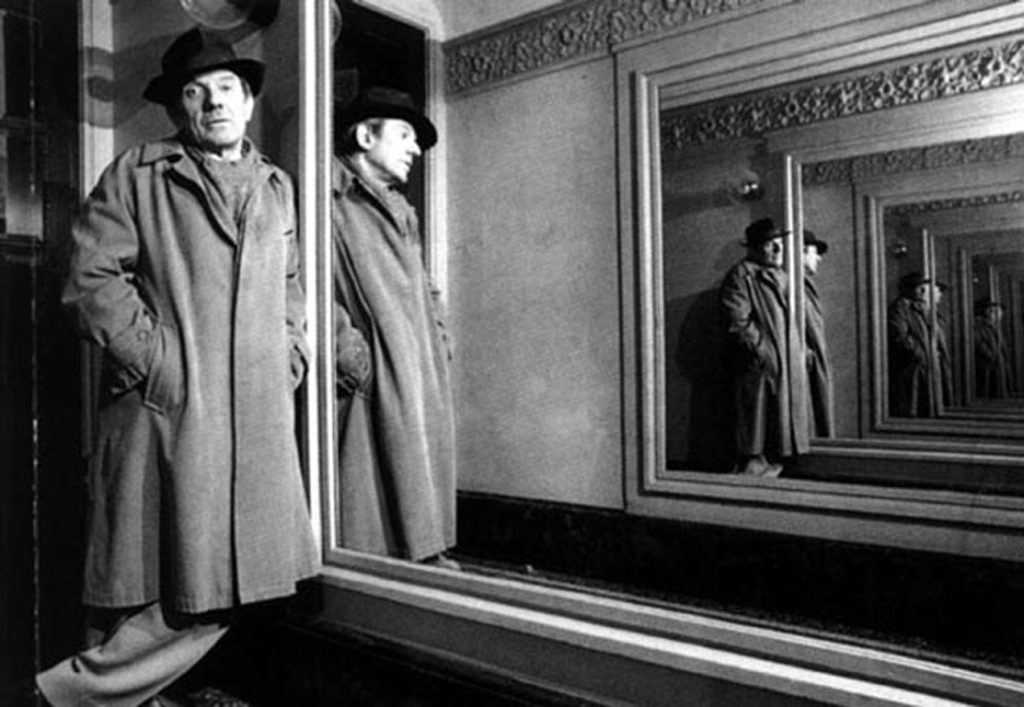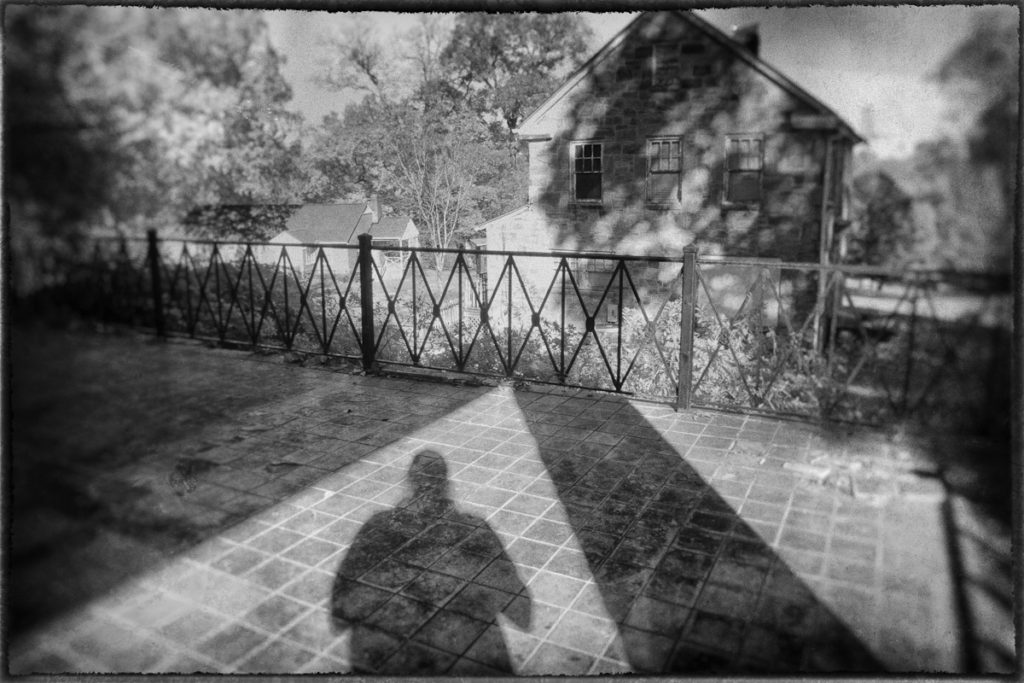Post-Modernist Thinker of Big Thoughts, Gilles Deleuze, Paris
French philosopher Michel Foucault says that photographs form spaces called heterotopia, a concept he uses to describe places and spaces that function as something new, a unique space which is neither here nor there, simultaneously both physical and mental, spaces that have more layers of meaning or relationships to other places than immediately meet the eye. According to Foucault, photos do not “capture images: they do not fix them, they pass them on” and we are then left with utterly different spaces: images that are also “events” and “passages” and that are “absolutely unique;” photos construct “events’ that make possible the exploration of an “infinite series of new passages.”
Put in non-philosophical jargon, what Foucault is saying is that photographs always contain more than the merely visible; there are the inevitable associations to places and spaces via the imagination of the viewer and the thoughts, memories and life experiences they bring to their encounter with a photograph, which may change from time to time, from look to look, from viewing to viewing. For Foucault, past, present and future space are necessarily conflated in the conceptual act required of recreating the visual reality of the photo, and in so doing, we create a heterotopia, a new space enclosing, while simultaneously opening up to, a new world.
*************
Me, Territorializing Myself via the “Double Movement” of an Assemblage, circa 1974….or, as we call it in America, A Bathroom Mirror Selfie
What is the means by which photography forms this new reality?
The photograph is a site of what French philosopher Gilles Deleuze calls “territorialization” – both de-territorialization and re-territorialization – post-modernist jargon for the claim that a photo both simultaneously gains and looses meaning, depending on who is looking at it, in what cultural era they’re doing so and with what distinct viewpoint.The act of viewing photos is always, at base, a conceptual process that is both productive and destructive, a “double movement” where the photo both accumulates meanings (re-territorialization) and is divested of meanings (de-territorialization).
Photographs are what Deleuze calls “assemblages,” configurations of linked conceptual components in intersection with each other. “An assemblage is the result of this process, and can be thought of as constituted by an intensification of these processes around a particular [photo] through a multiplicity of intersections of such territorializations.” In other words, when looking at a photograph taken by Robert Frank, say, in 1958, its current meaning and interpretation may be completely different to the reading of the same photograph in the era it was taken, given the current cultural and social realities and the distinct concerns of the viewer necessarily embedded in those social and cultural realities. It’s the same photo but different assemblages.
*************
For Foucault and Deleuze, photographs are creations of the highest order, unique heterotopias redolent of infinite meanings lost and found. Your crummy photographs aren’t simple banal, uninspired documents of fence-posts, cats and/or your adorable kids, they’re the portal to a unique new conceptual reality – “assemblages,” formed from the intersection of your inner mental, physical, psychological, visual and spiritual dimensions at an historical moment in time with all its subjective components. Silly you, you probably had no idea. This is why we need Post-Modernist philosophers, to teach us this.
In all seriousness, we’ve become so incredibly habituated to photographs, we’ve lost sight of their remarkable nature, that maybe that’s a good enough reason to wade through the turgid jargon of thinkers like Foucault and Deleuze to get at the pearl of wisdom hidden therein, to be reminded of the miracle contained in the simple snap of the shutter. Be thankful I’m doing it for you.
It seemingly means nothing to us that we have the miraculous capability of freezing a moment otherwise destined to vanish in time…and thereby creating something new, unique. That’s a remarkably profound gift photography gives us, more so when we understand it in the way articulated by Foucault and DeLeuze – as the creation of an utterly new reality nestled inside a larger reality we share with others. The fact that we’re capable of doing so, with the simple machinery of a light-tight box, should inspire awe in you. Never forget how amazing photography really is.
Views: 779




Yes, that’s become perhaps the most interesting perspective on photography – for me at least. In fact the greater part of my website is made up of a series of galleries called Glimpsed Parallels, an idea that I think came into being after decades of lying dormant post my initial discovery of Saul Leiter in one of the Popular Photography Annuals – maybe in ’59 or so.
Sixty years later he’s still giving me reason to keep shooting after retiring from a life of commercial snapping of an entirely different kind.
http://www.roma57.com/uploads/4/2/8/7/4287956/d-3729_orig.jpg
Part of the buzz, as I guess you find yoursef, is that you are never one hundred percent certain that what you saw was actually there as you think you saw it. Technical skill doesn’t guarantee it: it lies deeper than that. Additionally, when you first see the image after it leaves the camera, you might have forgotten what you thought you saw and see something quite else and perhaps more interesting to you.
Rob
First off, Rob, your image is really wonderful. Second, where can I find Foucault’s writings on this topic?
Thank you, Chris, much appreciated.
Perhaps Foucault and Deleuze are more impressed by photographs than many others are because they prefer the trees to the wood?
What is it that makes (allows?) folks like that latch onto a picture that is usually nothing more than a straight record of something, and then expand it into other than that? Had a photographer intended making some sort of clever, time-travelling document with all manner of connotations not obvious at first glance, then okay, in that case they are playing along with him and giving him good PR, but then that would just be gallerist/agent speak, relevant to a photographer playing in the game, but hardly something that should be generalised and passed on to all photographs.
It’s obvious that everything will be seen in a different way as many times as there are different viewers or even repeat viewers in a different mood. But it hardly means the picture is doing anything other than hanging there on the wall or wherever. The same could be said of a banana, but maybe one shouldn’t push that particular example too far. And guess what: nobody designed that banana – it is just a banana as ever it was or will be, devoid of intent, pretence or expectations of praise. But, would one eat a photograph? Relative values, then, with the banana assuming greater importance to a starving man than any moonrise over any hamlet anywhere.
But returning to my first remark: the reality is that those guys are in the business of writing this kind of stuff; it’s what they do, as the saying goes.
Rob
Photo + viewer = new perception, every time.
That’s why I take pictures, so I can roam around the spaces inside the images and experience those moments and places again and again. It’s always different.
Big, beautiful prints are great, but one of the advantages of viewing an image on a digital device is the ability to zoom in close and easily see the details. But this is a very deliberate action, and I don’t see many other people taking the time to really look into the dozens of photos or videos they accumulate every day on their phones. Most folks only give a quick glance and then it’s off to Facebook or wherever. It’s so easy!
I guess that’s why photographers with big cameras who spend lots of time Photoshopping or using up film and paper naturally come to appreciate their finished pictures much more than most cellphone users do. All that processing and editing really makes you slow down and see what’s in there.
I agree with you that processing your image makes you see, literally, a lot more than you saw when shooting it, unless maybe you worked on large formats and saw all there was to see on the ground glass screen.
That was okay commercially, not that I used LF after going out on my own, but to do it for fun must be a bit anal, I’d think; I’d be bored before I put in the darkslide! I guess there was something different about those founding fathers of this art. But hey, it was all a new adventure to them and 135 cameras hadn’t been invented.
Regarding the cellphone photographers: other than some for whom it’s apparently an artform in its own right, the only snaps mine makes anymore are for easy reference purposes, where it proves very useful indeed.
Generally speaking, making pictures for the self is not as easy as some think. In fact, it requires a lot more motivation than does professional work, where both subject and reward are vested in the client. It can take me days to pull myself out of the doldrums and bother taking a camera out of the door. Both subject selection and the reason why I would be doing this for myself, this unnecessary work, form strong barriers to doing much of anything. Perhaps it’s more a measure of being too long in the boondocks, with deadening familiarity taking its toll.